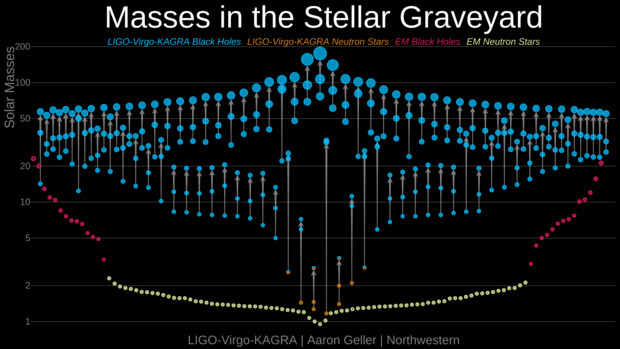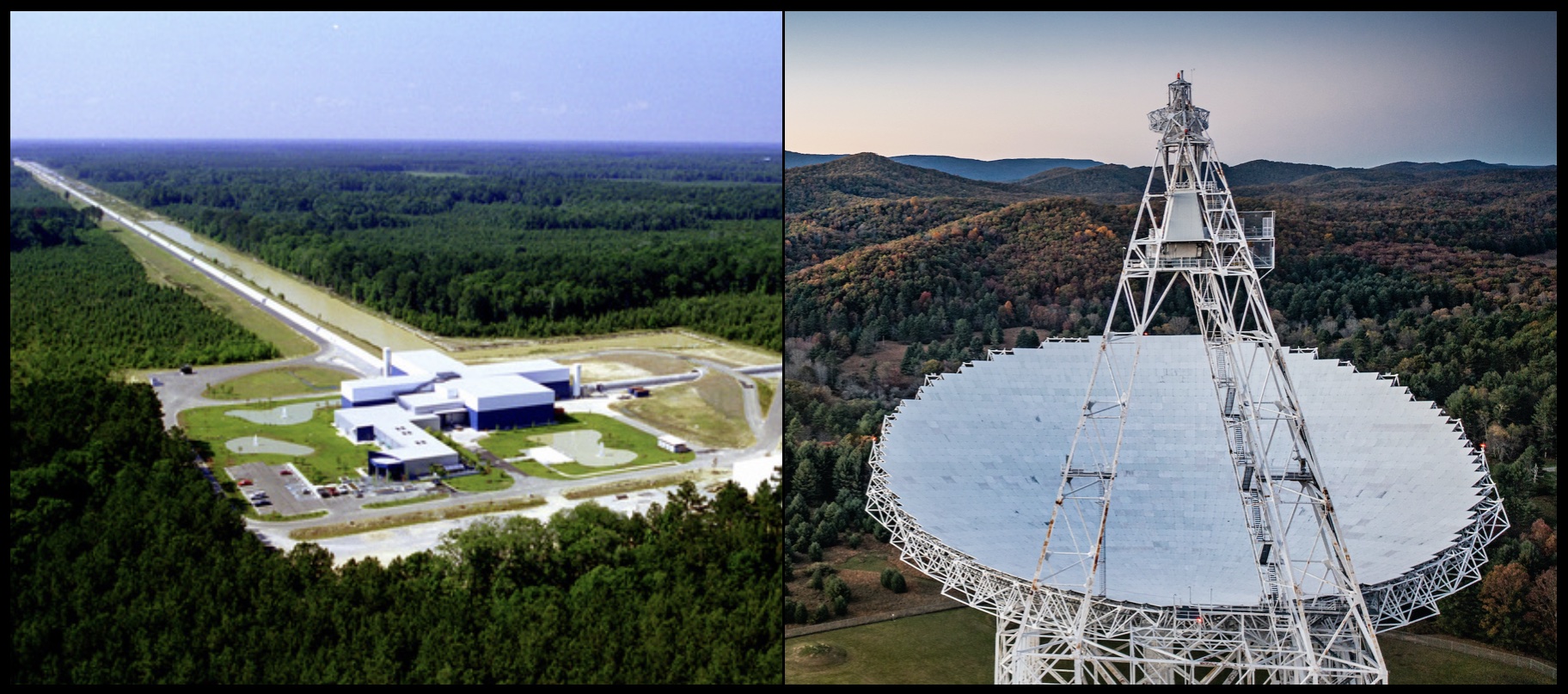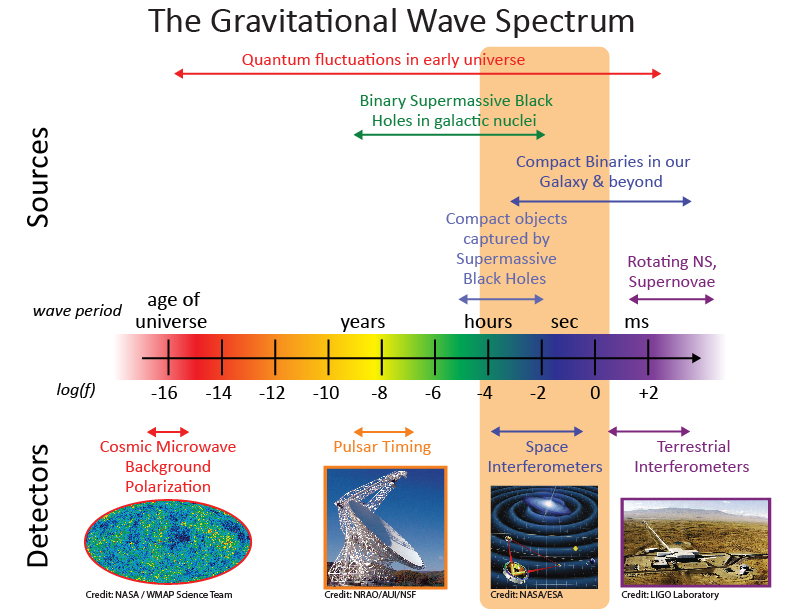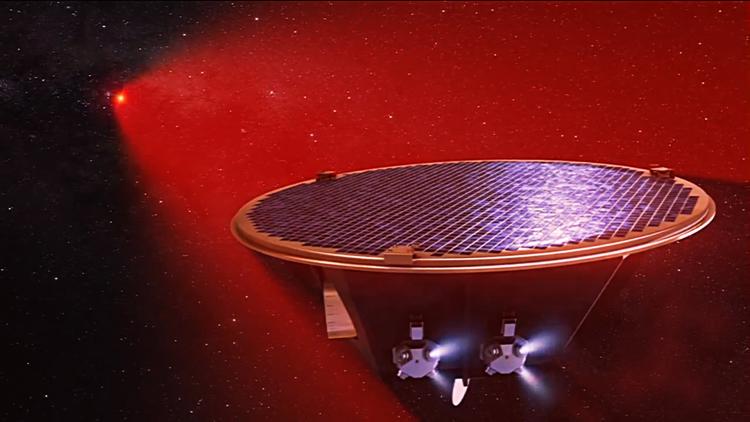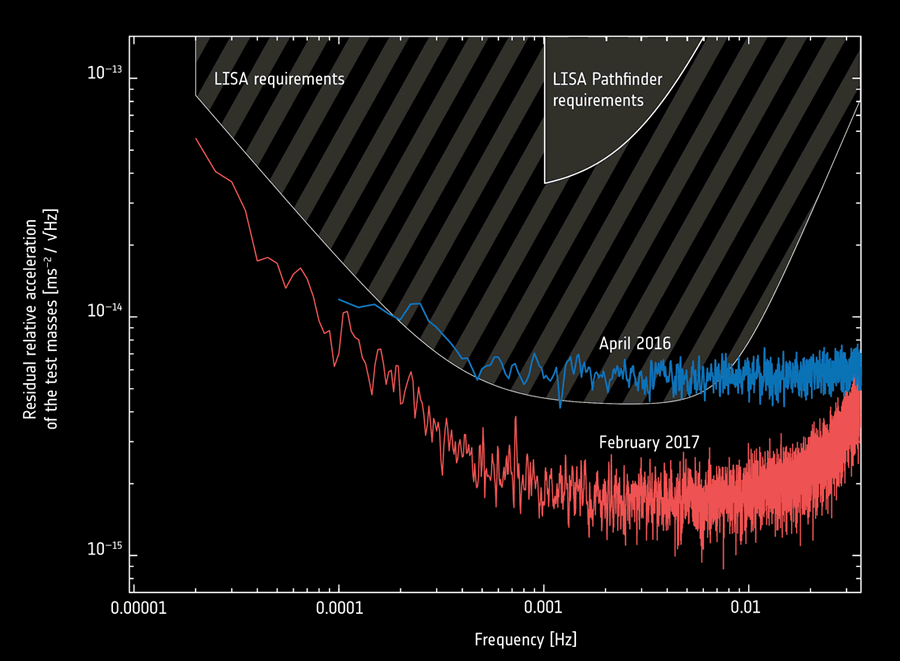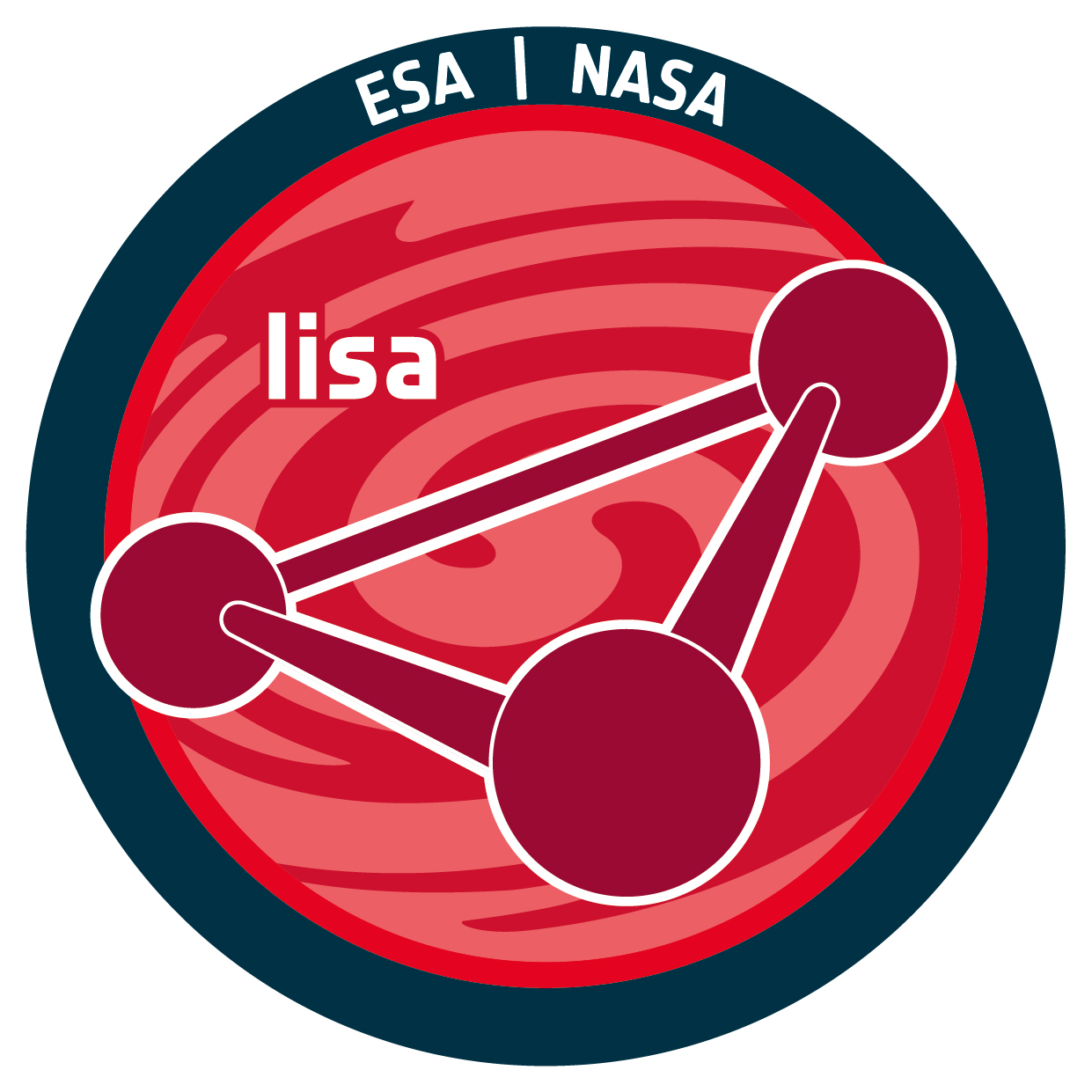NOI Deadline for LPS Program Extended
01/14/2025
The deadline for mandatory Notices of Intent for the LISA Preparatory Science Program has been extended to February 7th, 2025.
LISA Preparatory Science Gaps posted
12/02/2024
A list of “Science Gaps” defining focus areas for the current round of the LISA Preparatory Science program has been posted on the Physics of the Cosmos website. Mandatory Notices of Intent for the LPS program are due Jan. 17th, 2025, and full proposals are due March 20th, 2025.
Prototype LISA Telescope delivered to NASA Goddard
10/22/2024
NASA has taken delivery of an Engineering Development Unit for the LISA telescope from L3Harris technologies. This prototype is currently under test to evaluate its performance against LISA’s strict stability requirements. More info available here.
Amendment to LISA Preparatory Science Program
09/12/2024
The solicitation for the LISA Preparatory Science Program has been amended. The amendment clarifies eligibility rules, identifies dual anonymous peer review in the selection process, and encourages alignment of proposals with “science gaps” that will be curated by the Physics of the Cosmos Chief Science Office.
NASA Selects Six US Scientists to Serve on LISA Science Team
06/24/2024
NASA’s Astrophysics Division has selected six US scientists to serve on the joint ESA-NASA LISA Science Team, which will provide overall scientific stewardship for the mission. Details on the selections can be found on the Physics of the Cosmos Website.
NASA offering travel grants for the 2024 LISA Symposium
03/13/2024
NASA is pleased to offer travel grants to support participation from US-based
researchers in the 2024 LISA Symposium, being held in Dublin, Ireland this July. Students,
early-career researchers, and those from underrepresented groups are especially encouraged to
apply. More information here
NASA Seeks Applications for LISA Science Team
03/07/2024
NASA is seeking applicants for positions on the LISA Science Team, a community body which will support the ESA and
NASA project teams through the development and opertions of the LISA mission. Applications are due April 16th. Details can
be found on the Physics of the Cosmos webpage [link].
ESA Adopts LISA as a Project
01/25/2024
The Science Program Committee of the European Space Agency (ESA) has formally Adopted LISA as a flight
project. (
ESA announcement) This
major milestone clears the way for LISA to proceed into the implementation phase as a partnership between ESA and
NASA. (NASA
Announcement)
2024 LISA Symposium Announced
01/12/2024
The 15th international LISA Symposium will take place in Dublin, Ireland, from July 8th-12th, 2024. Conference details and registration information will be
available shortly at the conference website.
LISA Preparatory Science Awards Announced
09/15/2023
The selections for the latest round of LISA Prepatatory Science awards have been announced. Eight teams from around the US will use these awards to further
our understanding of LISA’s science potential and develop tools for use with future LISA data. See LISA Preparatory
Science page for more details.
Pulsar Timing Arrays detect Gravitational Wave Background
06/29/2023
After more than a decade of observations, a group of pulsar timing array collaborations simultaneously announced evidence for a background of
gravitational waves in the nanohertz band. The North American Nanohertz Observatory for Gravitational Waves (NANOGrav), the European Pulsar Timing Array
(EPTA), the Parkes Pulsar Timing Array (PPTA), and Chinese Pulsar Timing Array (CPTA) published their analysis in a series of peer-reviewed papers. The likely
source of this background is the inspiral and merger of many supermassive black hole binaries.
Ground-based Gravitational Wave Observatories Begin Observing Run
05/24/2023
The international network of ground-based gravitational wave detectors has begun its
fourth observing run after a series of upgrades to enhance sensitivity.
LISA Symposium Program Now Available
07/15/2022
The scientific program for the 14th international LISA Symposium is now available online. The all-virtual symposium will feature plenary and contributed talks across the full spectrum of LISA and LISA-related
science including mission updates, instrumentation, data analysis, astrophysics, cosmology, and fundamental physics. Registration is free.
New LPS Call Announced
05/18/2022
The LISA Preparatory Science Program (LPS) is accepting proposals as part of ROSES-22. A Mandatory NOI is due December 16th, 2022, with proposals due March
16th, 2023. For more information see the LPS Page and NSPIRES.
European Space Agency advances LISA to Phase B1
05/04/2022
Following a successful Mission Formulation Review in Fall 2021, the European Space Agency has advanced LISA to Phase B1.
During this phase, the detailed mission design and final technology demonstrations will be completed. The next major milestone is Mission Adoption, currently
planned for 2024.
Registration Open for the 14th International LISA Symposium
03/07/2022
Registration is now open for the 14th International LISA Symposium, which will take place July 25–29 2022. This Symposium is the main
biennial gathering for the worldwide LISA community and it promises to be an excellent meeting.
LISA Symposium 14 is being hosted by the University of Glasgow and the UK Astronomy Technology Centre, Edinburgh. The meeting is fully online and there is no
registration fee. Participation is welcomed from LISA enthusiasts across the globe and at all career stages. Note that abstract submission will open on April
1st 2022.
For more information, and links to the registration page, see https://tinyurl.com/LISASymp2022.
Astrophysics Decadal Survey recognizes LISA
11/29/2021
The U.S. National Academies of Science, Engineering, and Medicine recently released
Pathways to Discovery in Astronomy and Astrophysics for the 2020s.
In the report, NASA’s participation in the ESA-led LISA mission was recognized as
part of the NASA Astrophysics Division’s Program of Record: “NASA should work with
the European Space Agency to ensure the Laser Interferometer Space Antenna (LISA)
achieves the full scientific capability envisioned by New Worlds, New Horizons.”
[Section 7.7.3]
NASA Provides Laser for LISA Mission
09/14/2021
The first prototype laser for the LISA mission, developed at NASA's Goddard Space
Flight Center in coordination with industry partners, has been delivered to ESA for
stability testing.
Read More
NASA Announces New Selections for LISA Preparatory Science Program
07/01/2021
Selections for the second set of LISA Preparatory Science (LPS) awards have been announced! The LPS program
supports US-based researchers to conduct research activities related to LISA, and is added to the
initial cohort of programs selected in 2018. A summary of all the approved programs is available on
NSPIRES, and the full list of LPS selection can be found on our Community: LPS page.
Contract for LISA Charge Management Device Awarded
12/21/2020
The award for development of a Charge Management system for ESA's LISA mission has been awarded by NASA to
the University of Florida, Gainesville. The system is one of several key enabling technologies that NASA is
contributing to the LISA mission.
More information about the award is
available here.
New LIGO/VIRGO Catalog Released
11/02/2020
The LIGO/VIRGO Collaboration have released a new
catalog of gravitational wave detections, combining events detected in O1, O2, and the first six months of the
O3 runs. Improvements to the instruments have resulted in a signifcant increase in the rate of detections in O3,
producing a more complete portrait of the mass distribution of merger events in this catalog.
More information about the updated catalog can be found here.
LISA Announces Second Data Challenge!
10/21/2020
The LISA Consortium has released the first portion of the Second LISA Data Challenge
(LDC-2a), codenamed "Sangria," that consists of both a training data set as well as a blinad data challenge. Analyses
for LDC-2a build on lessons taught in the First Data Challenge,
and the LISA Consortium recommends completing several portions of that challenge before starting on the second data set.
For those who complete the challenge, your results may be submitted to the LISA Data Challenge working group for
evalution. The deadline for submission is October 1, 2021.
We hope you enjoyed the 2020 LISA Symposium!
9/8/2020
The LISA Symposium last week was the most highly attended to date! We thank the organizers for their hard work
and all the speakers for their contributions. Talks from the conference continue to be available on the
meeting website for a limited time. A playlist
of pre-recorded presentations is currently available on YouTube.
We hope you enjoyed the meeting and we look forward to joining you in two years for the next LISA Symposium!
2020 LISA Symposium
Agenda Now Available
7/24/2020
The agenda for the LISA XIII Symposium including the list of speakers, has been posted on the conference website
(Link). A playlist of
the pre-recorded presentations is now available on YouTube,
for participants to view in advance of the live sessions.
2020 LISA Symposium
Abstract Submission Deadline Extended
7/20/2020
The deadline for abstract submissions for the LISA XIII Symposium has been
extended to 20 July at 12:00 UTC. The abstract submission portal will remain
open after that time, but will close permanently on 10 August at 12:00 UTC.
However, any abstracts received between 20 July and 10 August will only be
eligible for a pre-recorded contributed presentation.
2020 LISA Symposium Registration and Abstract Submission
6/24/2020
Registration and abstract submission for contributed talks for the 13th International
LISA Symposium are now open. This
virtual meeting will be held September 1-3, 2020
and will be open to all and free of charge. The symposium will consist of invited
live talks, contributed live talks, and live discussion sessions, with many
additional invited and contributed talks prerecorded.
The deadline for abstract submission is 17 July, 23:59 UTC.
2020 LISA Symposium rescheduled as virtual meeting
5/21/2020
The 13th International LISA Symposium will take place everywhere online on three
afternoons (UTC), on September 1-3, 2020. The symposium will focus on the status
of the LISA mission; on the latest developments in its design and technology; on
the science (astronomy, astrophysics, cosmology, and fundamental physics) of LISA’s
millihertz gravitational-wave sources; and on the ensuing challenges in gravitational
theory and analysis.
The live program of invited and contributed presentations, panels, and townhalls will
be supplemented by prerecorded talks and tutorials, which will be available on the
conference website in advance of the symposium. A call for contributed presentations
will go out in early June, with a deadline in mid-July; and the final program should
be circulated by early August. More information will appear soon at the
LISA symposium website,.
2020 LISA Symposium Cancelled
4/13/2020
Due to the ongoing global emergency, organizers for the LISA Symposium originally planned for this
July in Glasgow have decided that it can no longer take place. Discussions are in progress to consider an alternative
meeting format this year and a timeline for a rescheduled Symposium. Updates will be posted as decisions are announced.
New round of LISA Preparatory Science posted in ROSES-2020
4/7/2020
NASA has posted a
new opportunity to ROSES-2020 calling for proposals to the LISA Preparatory
Science Program. This program provides support for U.S. investigators to conduct activities that contribute to
furthering the eventual science yield of LISA, inluding waveform simulations, analysis techniques,
cross-disciplinary studies, preparatory astrophysical observations, and more. Mandatory NOIs are due by 15 September
2020, and the proposal due date is 15 December 2020. Read the announcement.
NASA Awards LISA telescope contract to New York firm
3/17/2020
The development of the LISA telescopes is one of NASA's primary hardware contributions to the
ESA-led mission. On March 16, 2020, NASA announced that the engineering unit development contract for the
planned telescope design has been awarded to L3Harris Corporation, located in Rochester, NY. The development
and testing of an engineering unit is a major step in producing space-ready hardware for the
mission. Read
the announcement
LISA Symposium — Save the Date!
19-24 July 2020
Glasgow, Scotland
02/20/2020
It is five months to the start of this year's LISA Symposium! The website and the
registration form details are not yet finalized, but they will be available very soon with registration anticipated to open at the end of this month and abstract submission opening during March.
The Symposium will be formally opened at a complimentary welcome event in the University
of Glasgow's Hunterian Museum on
Sunday 19th July. The Symposium will then run from 9am on Monday 20th till 5pm on Friday 24th July in
the Bute Hall with the conference dinner
taking place mid-week at the Kelvingrove Art Gallery and Museum.
Along side these formal conference activities and lots of informal opportunities to meet with colleagues
there will be a number of social events that may be reserved through the registration page.
For inquiries, you may contact lisasymposium2020@glasgow.ac.uk.
LISA Interest Survey
Due: January 10, 2020
12/10/2019
Attention US researchers! The NASA LISA Study Team is requesting your input
regarding the future use of data from the LISA gravitational wave observatory. Even if your research area
is not directly related to gravitational waves, we welcome your feedback to gauge the
needs and interests of the broad US astronomical research community. This 16 question survey should take 5 or
10 minutes to complete. We welcome your input by Friday, January 10, 2020.
LISA Passes Review Milestone
12/01/2019
LISA has successfully completed the Mission Consolidation Review (MCR), a review conducted
by the European Space Agency (ESA) to assess progress at the middle of Phase A. The review team examined
the current state of the mission design, payload developments, and programatic planning at this early stage
in the mission formulation process. NASA supported ESA in this review by providing inputs on NASA
technology development activities as well as subject matter experts who assisted in reviewing materials.
The LISA team will now focus on the activities for the remainder of mission Phase A.
NASA's LISA Study Team welcomes new membership
10/23/2019
The NASA LISA Study Team welcomes seven new members to it's ranks! For information about the current NLST membership and alumni who have
stepped down, please consult the Study Team Roster.
Call for Nominations to Augment the NASA LISA Study
Team
Due: October 11, 2019
09/19/2019
NASA welcomes nominations, including self-nominations, for new members of the NASA LISA Study Team
(deadline: October 11, 2019). We particularly encourage people of diverse backgrounds, skills, career stages, and viewpoints
to apply. See the full text of the call and application instructions for more information.
Newly discovered binary system will be a strong LISA source
08/09/2019
Astronomers using the Zwicky Transient Facility (ZTF) have announced the discovery of ZTFJ1539+5027, a pair of white dwarfs that orbit one another roughly every seven minutes. This system will be a strong LISA source, detecable after roughly one week of observing and with a total signal-to-noise ratio of nearly 200 in a four-year LISA mission.
First Results from GRACE-FO's Laser Interferometer
07/19/2019
The first results from the Laser Ranging Instrument (LRI) on the Gravity Recovery and Climate Experiment Follow On (GRACE-FO) mission were published in Physical Review Letters on July 19th, 2019. The GRACE-FO mission maps the Earth's gravity field by precisely tracking the relative positions of a pair of spacecraft that orbit the Earth. The LRI makes these measurements using heterodyne laser interferometry, the same technique that will be used for LISA. These first results from LRI demonstrate nanometer-level precision over the 220km range between the GRACE-FO satellites.
Event Horizon Telescope makes first image of a black hole
04/10/2019
The Event Horizon Telescope project, an international effort to link radio telescopes across Earth to build a planet-sized telescope with superb angular resolution has made the first image of a black hole. The image is of gas surrounding a black hole of nearly six billion solar masses in the galaxy M87. LISA will measure the mergers of massive black holes which are the ancestors of these supermassive black holes.
Ground-based gravitational wave observatories begin 3rd observing run
04/01/2019
O3, the third observing run of the advanced ground-based gravitational wave detectors has begun after the LIGO and Virgo teams have spent over a year upgrading their instruments to improved sensitivities. O3 is expected to last for a full year with increased event rates. O3 will also feature low-latency, public alerts which will enable follow-up of gravitational wave events by a variety of astronomical facilities.
LISA Data Challenge
7/11/2018
The first data set for the LISA Data Challenge has been released by the LISA Consortium. If you'd like to try your hand at extracting gravitational wave sources from simulated LISA data, you can download tools and data at the Data Challenge Website. The deadline for entries to this first challenge will be near the end of 2018.
LISA Symposium Program Posted
6/28/2018
The scientific program for the 12th International LISA Symposium is now posted on the conference website . The meeting will feature talks on the LISA mission, enabling technologies, data analysis, astrophysics, and related topics. Over 200 researchers from around the world will attend the conference in Chicago July 8th-13th. Late registration will be available until the start of the conference.
LISA Symposium Conference Website
GRACE-FO Launches LISA Technology
5/22/2018
The Gravity Recovery And Climate Explorer Follow-On (GRACE-FO)
mission launched from Vandenberg AFB on a mission to map the Earth's
gravitational field. While the primary spacecraft systems are a rebuild
of the original GRACE mission, GRACE-FO carries the Laser Ranging
Interferometer (LRI) technology demonstration which will use laser
interferometry to measure nanometer changes between the two GRACE-FO
spacecraft flying roughly 300km apart from one another. The LRI was
built by a US-German collaboration that includes many LISA veterans and
takes advantage of technologies that were originally developed to
support LISA. The advancement of these technologies for GRACE-FO now
adds experience that can be applied to LISA.
Read more on NASA.gov
LISA Symposium Registration Open
5/10/2018
The LISA Symposium being held in Chicago, IL on July 8-13 is still
accepting registrations. This is the 12th edition of the
once-per-two-year meeting that covers all aspects of LISA including
mission development, instrumentation, theory, analysis, and
astrophysics. The Abstract deadline closed on May 9th, 2018.
12th International LISA Symposium Now Accepting Abstracts
04/06/2018
Abstract submissions are open for the 12th International LISA Symposium,
to be held 8-13 July 2018 in Chicago, IL. Submissions can be made at the abstract
submission page.
The LISA Symposium is a wide-ranging conference that addresses the broad
astrophysical scope of LISA science, mission, and technology
development, as well as challenges and interesting questions facing the
astrophysics and gravitational wave community.
If you still have not registered for the Symposium, visit the
registration page.
We are looking forward to seeing you in Chicago this summer!
LISA Preparatory Science (LPS) ROSES Solicitation:
Proposals Due June 14, 2018
03/27/2018
NASA is pleased to announce the LISA Preparatory Science (LPS) solicitation, as part of ROSES2018 (element D.13). The LPS will support science data analysis and LISA-related astrophysics research of US-based scientists. As part of the international LISA Consortium, US investigators will conduct research projects aimed at augmenting and complementing the LISA Consortium Data Analysis Work Packages as well as NASA LISA Study Office science and data activities . Proposers for the LISA Preparatory Science (LPS) solicitation should consult the LPS FAQ that is available at the NSPIRES website.
We look forward to your ideas!
Please note: Notices of Intent are mandatory for LPS and were due March 19, 2018. All questions should be addressed to the HQ POC for LPS, POC Rita Sambruna, rita.m.sambruna@nasa.gov
Registration open for the 12th International LISA Symposium - July 8-13 2018
03/23/2018
The 12th International LISA Symposium will be held in Chicago, IL
on July 8-13. This biennial meeting covers the full range of LISA
topics including astrophysics, data analysis, technology development,
and mission development. This year's Symposium is hosted by the Center
for Interdisciplinary Exploration and Research in Astrophysics (CIERA)
at Northwestern University, and co-sponsored by the American
Astronomical Society. Registration and hotel reservations are open now
and Abstract submission will open soon.
NOI for LISA Preparatory Science: full list of team members + deadline extended to 19 March 2018
03/14/2018
Note to community: please make sure to visit the LISA Preparatory Science (LPS) FAQ (on the ROSES website), and -particularly- note the strong encouragment to include the full list of team members in the NOI.
This amendment delays due dates in anticipation of power loss to New England as a result of the upcoming storm. The mandatory NOI due date for ROSES-2018 D.13 LISA Preparatory Science has been changed to Monday March 19, 2018. The full proposal due date for D.13 LISA Preparatory Science remains June 14, 2018.
Questions concerning ROSES-2018 D.13 LISA Preparatory Science may be directed to POC: Rita Sambruna, rita.m.sambruna@nasa.gov
LISA Preparatory Science (LPS) ROSES Solicitation:
Mandatory NOI Due March 15, 2018
02/14/2018
NASA is pleased to announce the release in February 2018 of the LISA Preparatory Science (LPS) solicitation, as part of ROSES2018 (element D.13). The LPS will support science data analysis and LISA-related astrophysics research of US-based scientists. As part of the international LISA Consortium, US investigators will conduct research projects aimed at augmenting and complementing the LISA Consortium Data Analysis Work Packages as well as NASA LISA Study Office science and data activities .
Please note: Notices of Intent will be mandatory for LPS and are due March 15, 2018. Failure to submit an NOI may result in your proposal being returned without evaluation. We look forward to your ideas! POC: Rita Sambruna, rita.m.sambruna@nasa.gov
-->
